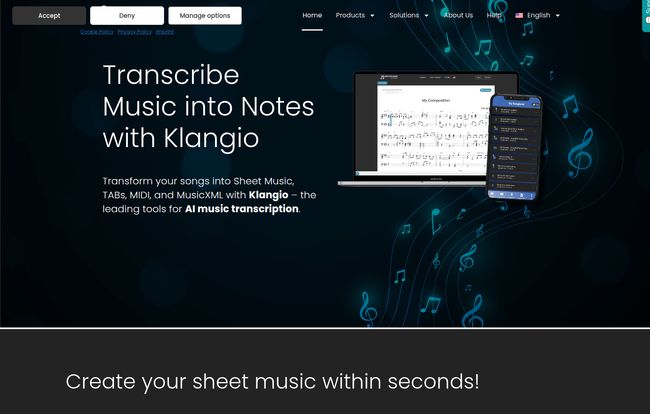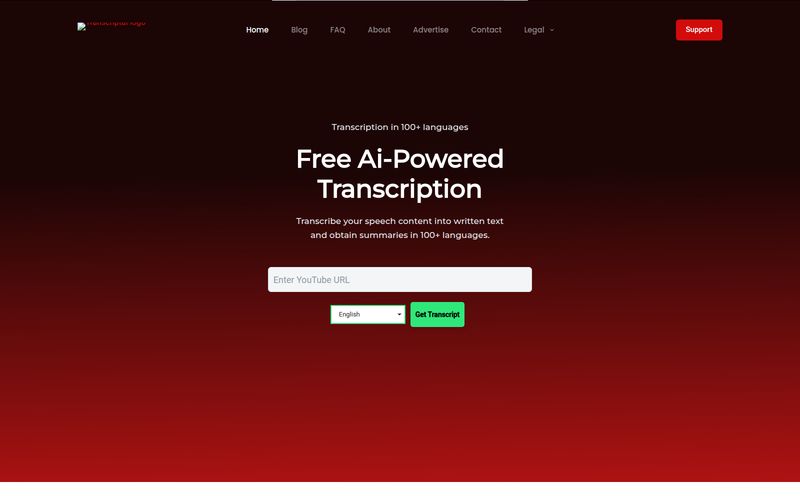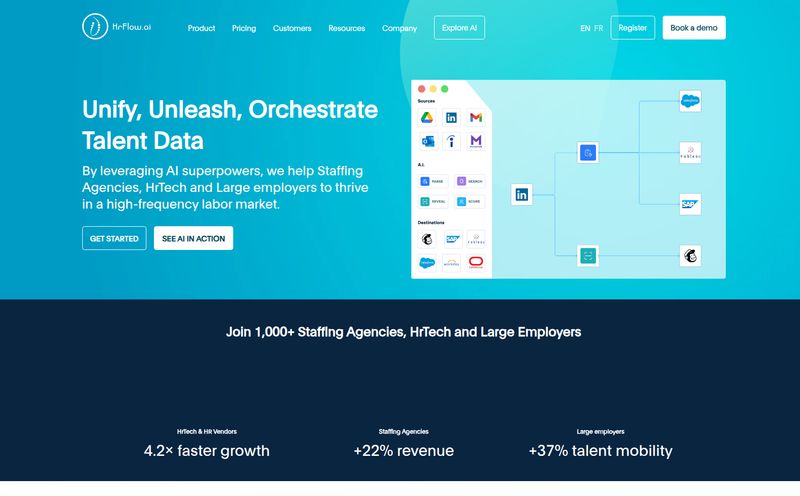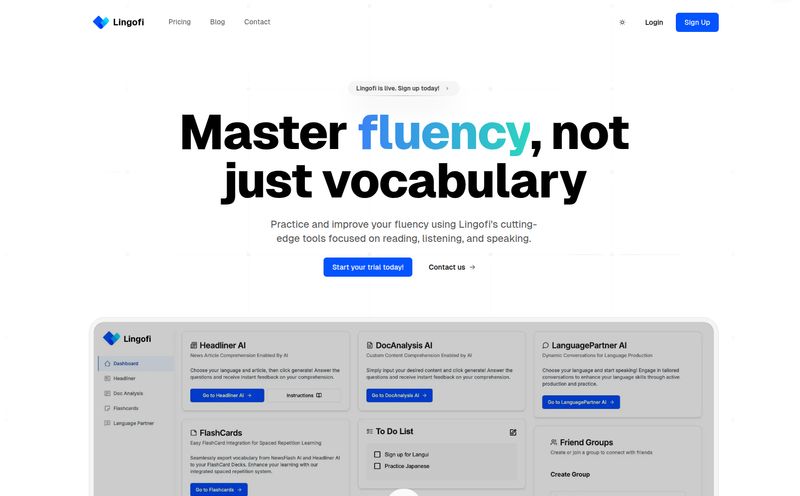If you're a musician, you know the drill. You hear a riff, a chord progression, or a ridiculously catchy solo, and the urge to learn it is overwhelming. What follows is usually a long, sometimes frustrating, session of pausing, rewinding, and trying to pluck the notes out of thin air by ear. I've spent more hours than I'd care to admit with my ear glued to a speaker, trying to decipher a muddy bassline from a 90s rock song. It's a rite of passage, sure, but man, is it tedious.
So when AI tools started popping up promising to do this heavy lifting for us, my interest was piqued. And my skepticism. Can a machine really capture the soul of a performance? I’ve seen my fair share of tech fads in the traffic and SEO world, so I'm naturally wary of anything that claims to be a magic bullet. Enter Klangio AI. The name has been buzzing around, and their claim is bold: "Create your sheet music within seconds!"
Okay, Klangio. Challenge accepted. Let’s see what you’ve got.
What Exactly is Klangio AI?
At its heart, Klangio isn't just one tool; it’s a whole suite of them. Think of it less as a single piece of software and more as a specialist for every instrument in your digital studio. The core idea is simple: you feed it an audio file—an MP3, a WAV, even a YouTube link—and it uses artificial intelligence to listen and write down the notes. It's like having a tireless musical stenographer on call 24/7.
It then spits out the transcription in various formats like traditional sheet music, a MIDI file for your DAW, MusicXML, or even a Guitar Pro file. That compatibility alone is a pretty big deal for anyone who actually works with music software.
A Tool for Every Player in the Band
This is where Klangio really caught my eye. Instead of a one-size-fits-all approach, they’ve developed specific AI models for different instruments. This makes sense. The way you’d notate a piano piece is wildly different from how you'd tab out a guitar solo or a drum pattern. It shows a deeper understanding of what musicians actually need.

Visit Klangio
For the Pianists: Piano2Notes
This one’s for the ivory-ticklers. Feed it a recording of a piano piece, and it aims to generate the sheet music. This could be a game-changer for figuring out complex classical pieces or just jamming along to a pop song.
For the Guitarists: Guitar2Tabs
As a guitarist, this was my first stop. The promise of turning an audio track directly into a guitar tab is, frankly, the dream. From what I’ve seen, it does a respectable job of figuring out notes and chords, laying them out in a familiar tablature format. No more endless searching for inaccurate fan-made tabs on sketchy websites.
And Even for Drummers and Singers?
Yep. They have Drum2Notes and Sing2Notes. The idea of an AI transcribing a vocal melody or a complex drum fill is pretty wild, and shows the ambition of the platform. They also cover violins and wind instruments with Violin2Notes and Wind2Notes. It seems they're trying to cover the entire orchestra, one AI at a time.
The Good, The Bad, and The AI's Tin Ear
So, does it work? Well, it's complicated. Like any tool, it has its brilliant moments and its... let's call them 'learning opportunities'.
Let's start with the good stuff. First, it’s fast. Incredibly fast. What could take a human hours of painstaking work, Klangio can churn out a first draft of in under a minute. The ability to just drop a YouTube link in without downloading anything is a massive time-saver. And the export options are fantastic. Being able to pull a transcription directly into Logic Pro, MuseScore, or Sibelius as a MIDI or MusicXML file integrates it directly into a real musician's workflow.
Now for the bad. Let's be real, the AI is not infallible. It makes mistakes. I fed it a fairly clean recording of a blues guitar solo, and while it got about 85% of it right, it missed a few nuanced bends and ghost notes. For a simple four-chord pop song, it's pretty much flawless. For a complex, polyphonic piece with lots of effects and a muddy mix? You're going to get a transcription that's more of a... suggestion. This isn't a failure of Klangio, specifically, but just the state of the tech right now. It's a phenomenal starting point, not a finished product. Which, to be fair, is where their built-in Edit Mode comes in handy, allowing you to clean up the AI’s mistakes manually.
Let's Talk About the Price... Or Lack Thereof
Here's a fun little anecdote. I went to their website to check out the pricing structure, because the platform mentions that full features require a "Pro subscription." Standard stuff. So I clicked around, looking for the pricing page, and... I hit a 404 error. A classic "The page you were looking for couldn't be found."
While that's probably just a temporary website glitch (we've all been there, web maintenance is a beast), it means I can't give you a hard number. However, based on the model, it's safe to assume Klangio operates on a freemium basis. You likely get a certain number of free transcriptions or limited features, with a monthly or annual subscription unlocking the full power of the tool—unlimited transcriptions, advanced editing, more export options, and so on. My advice? Head over to their site yourself; hopefully, by the time you're reading this, they've fixed teh link!
The Workflow: From YouTube Link to Sheet Music
Using the tool is refreshingly straightforward. They've broken it down into four simple steps:
- Choose Your Input: Upload an audio file from your computer or just paste in a YouTube URL. Simple.
- Let Klangio AI Do the Heavy Lifting: This is where the magic happens. You wait a minute or two while the AI analyzes the track. Go grab a coffee.
- View, Play, and Edit Your Notes: The transcription appears on your screen. You can play it back to hear how it sounds and, crucially, jump into the editor to fix any notes the AI got wrong. This human-in-the-loop step is what makes it a practical tool rather than just a novelty.
- Download in Multiple Formats: Once you're happy, you can export your work as a PDF for printing, a MIDI file for your DAW, or a MusicXML/GuitarPro file for other notation software.
Frequently Asked Questions about Klangio AI
- How accurate is Klangio AI?
- It varies. For clean recordings with a single instrument, it can be highly accurate. For complex songs with multiple instruments and effects, it provides a great starting point but will likely require manual editing.
- What file formats can I use with Klangio?
- You can upload common audio files like MP3, WAV, and M4A. You can also directly paste a link from YouTube, which is one of its most convenient features.
- Can Klangio transcribe multiple instruments at once?
- Klangio's strength is its instrument-specific models (like Piano2Notes, Guitar2Tabs). While it can attempt to transcribe a full song, its accuracy is best when focused on the instrument its specific AI was trained for.
- Is Klangio AI free?
- It appears to have a free tier with limitations. To access all features, like unlimited transcriptions and advanced export options, a Pro subscription is required, though specific pricing wasn't available at the time of writing.
- What instruments does Klangio support?
- It has dedicated apps for Piano, Guitar, Drums, Vocals, Violin, and Wind Instruments. They also have tools for scanning existing sheet music (Scan2Notes).
So, What's the Verdict?
After playing around with Klangio AI, I can confidently say it’s not going to put music teachers or professional transcribers out of a job. Not yet, anyway. But that's not the point. It’s not a magic wand; it's a super-powered assistant.
For students, hobbyists, and working musicians, Klangio is an incredible time-saving tool. It automates the most grueling 80% of the transcription process, leaving you to handle the final 20% of nuance and correction. It’s a way to quickly get the basic structure of a song down so you can spend more time playing and less time rewinding. And for that alone, it’s a brilliant addition to any musician’s digital toolkit.



